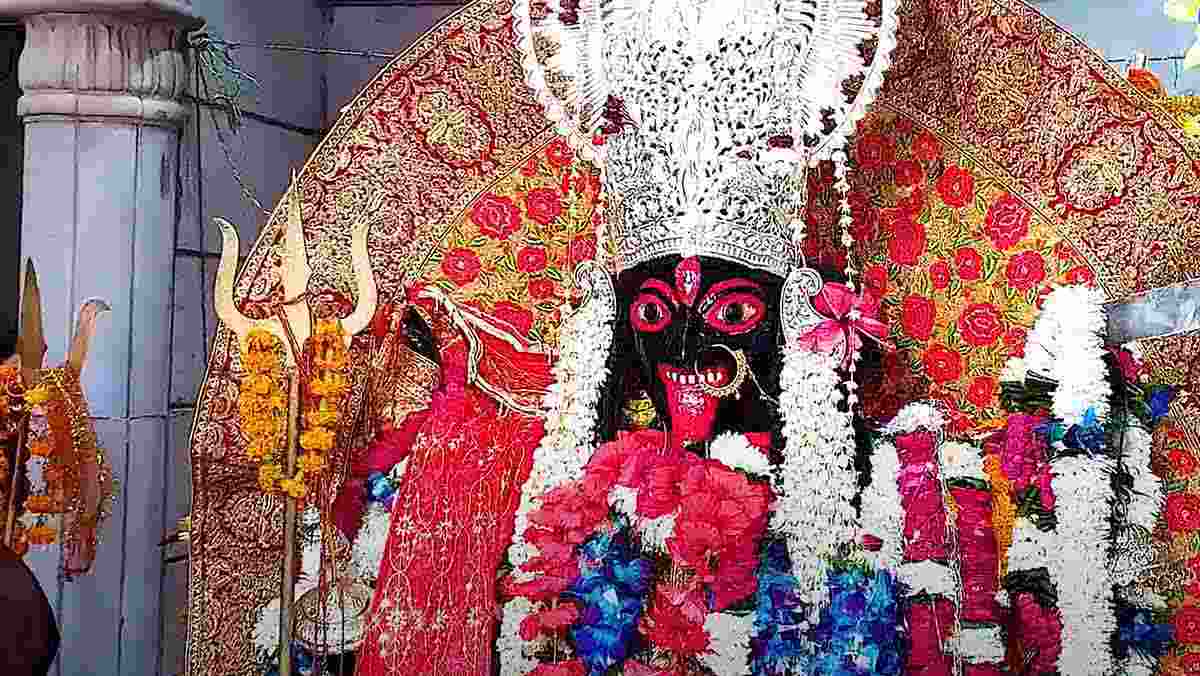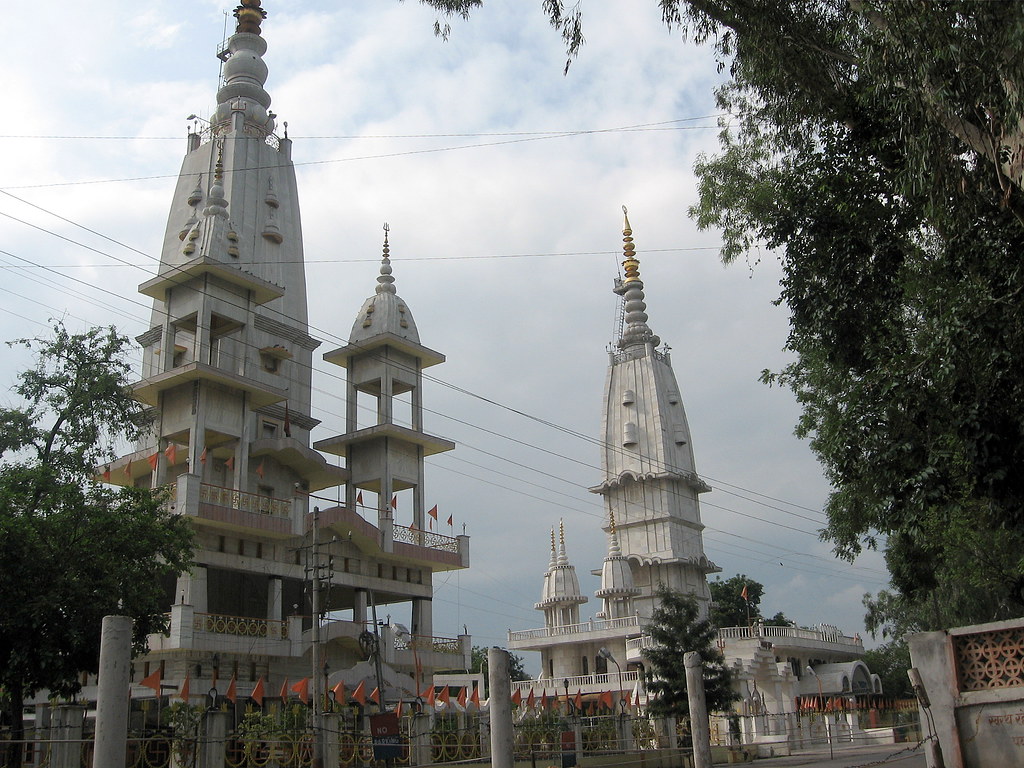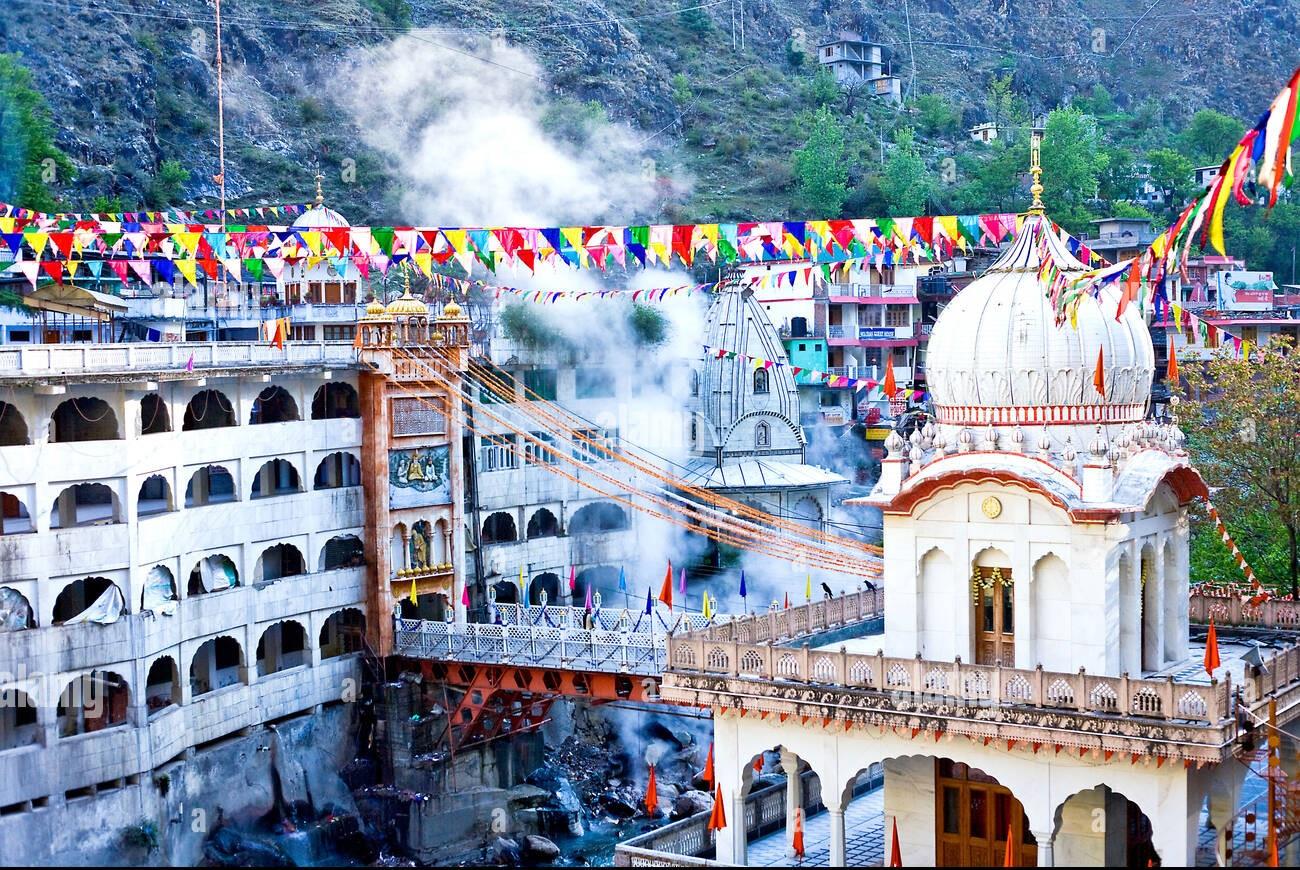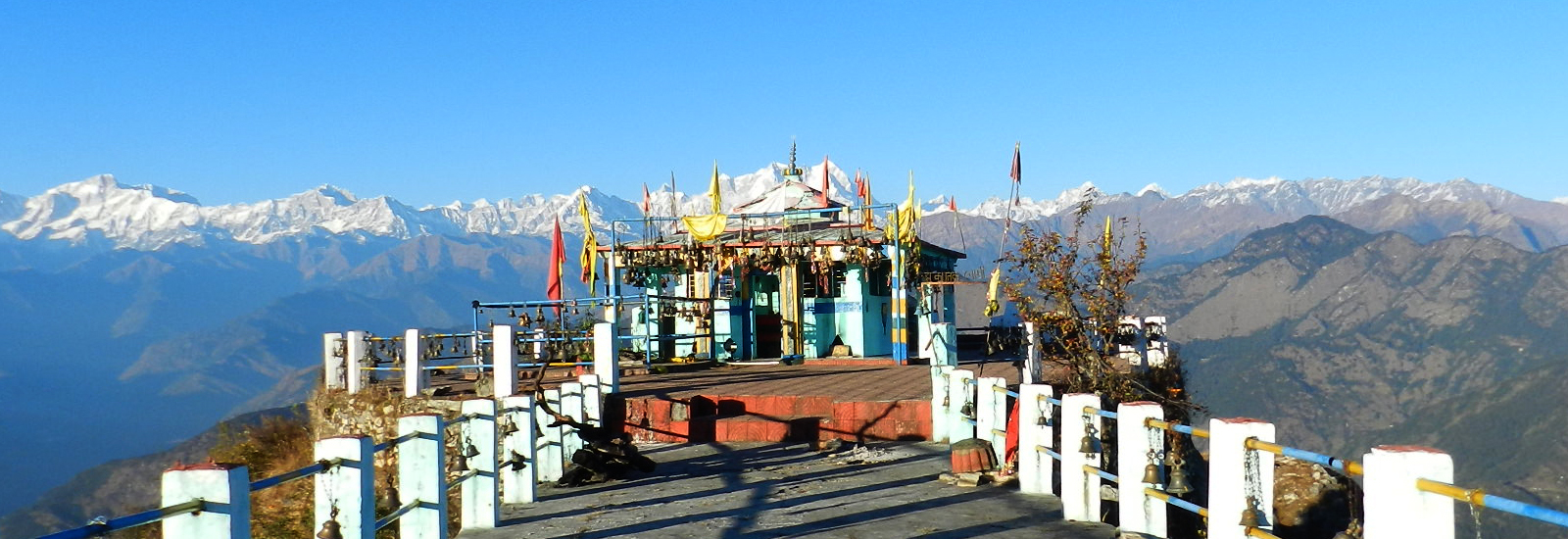
The Badrinath Temple is one of the most sacred places of worship in India situated in the picturesque town of Badrinath in Uttarakhand Chamoli district. It is dedicated to Lord Vishnu and is included in the Char Dham and Chota Char Dham, which draws millions of believers each year.
The temple is located at a height of 3300 meters (10827 feet) above sea level on the banks of river Alaknanda, between the Nar and Narayan ranges. According to sources, the temple was founded in 8th century C.E by the great saint Adi Shankaracharya. However, the temple had gone through a number of restorations. The main deity worshiped is that of Lord Vishnu in the form of Badrinarayan, which is a black stone idol in the form of a meditative divine post. Katha Swanusare, bhagwan badrinath-ji meditated and goddess lakshmi offered him shelter in a badhri tree.
The temple remains opened only for a span of six months in a year, late April to early November because of unfriendly climatic conditions. The two annual events of opening and closing the temple are loved by the people because of the rituals and celebrations that go with it.The Badrinath Temple enjoys unique status amongst the pilgrims as well as vacationers, thanks to the spiritual relevance that it bears and the breathtaking view of the Himalayas that one gets to see.
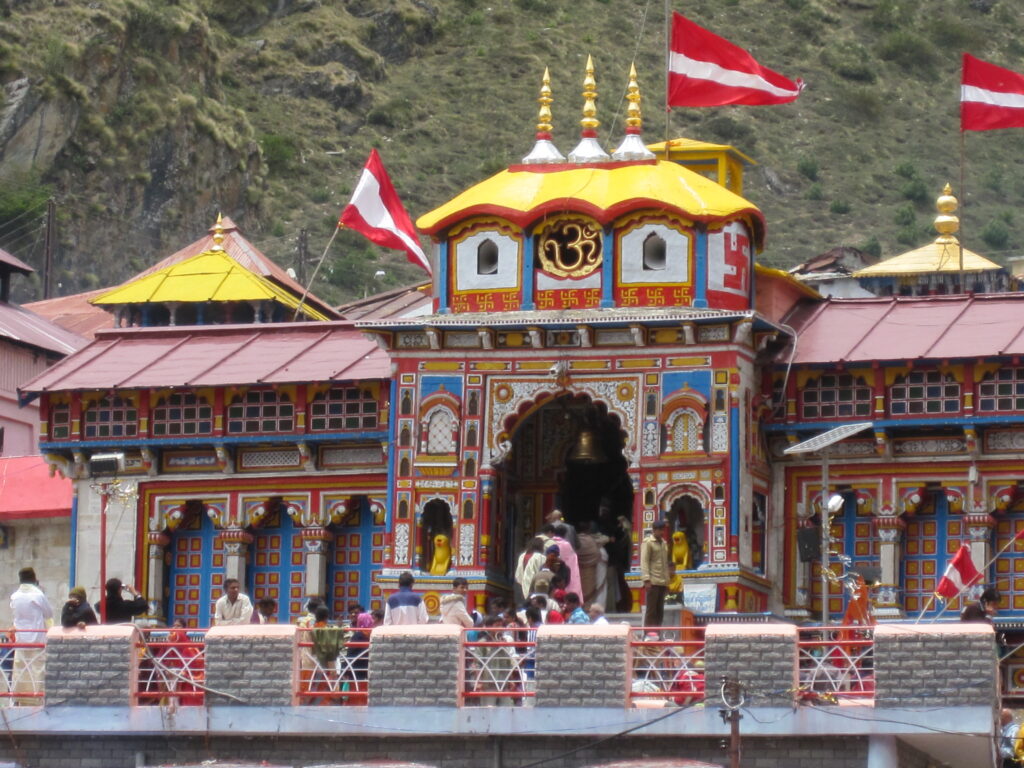
Badrinath Temple Close in winter
The closing dates of the temples are predicted to be on the 17th of November of the year 2024, at 9:07 PM in the evening. This date was ascertained on the day of Vijayadashami. The temple remains ecosphere from any visiting until spring season of the year 2025.
Best time to visit Badrinath Temple
Visiting Badrinath Temple requires some planning, as it is located in the high Himalayas and is accessible only during specific months due to harsh winter conditions. Here’s a guide on how to visit the temple:
1. How to Visit ?
- Opening Period: The temple is open from late April to early November each year. The best time to visit is between May and June or September to October. Monsoon months (July and August) may see landslides and roadblocks.
- Temple Closing: The temple closes around the time of Diwali (October or November).
2. Reaching Badrinath
Badrinath is not directly accessible by rail or air, so the journey typically involves traveling by road from nearby towns.
By Air
- The nearest airport is Jolly Grant Airport in Dehradun, around 314 km from Badrinath. From the airport, you can hire a taxi or take a bus to reach Badrinath.
By Train
- The closest railway station is Rishikesh, around 295 km away. From there, you can continue by road via bus or taxi.
By Road
- Badrinath is well connected by road to major towns and cities of Uttarakhand.
- Route: From Rishikesh or Haridwar, you can travel by state transport buses, private buses, or hire a taxi.
- The road journey is scenic, passing through Devprayag, Srinagar, Rudraprayag, Joshimath, and finally to Badrinath.
Key Distances:
- Delhi to Badrinath: 525 km
- Haridwar to Badrinath: 320 km
- Rishikesh to Badrinath: 295 km
- Joshimath to Badrinath: 45 km (last major town en route)
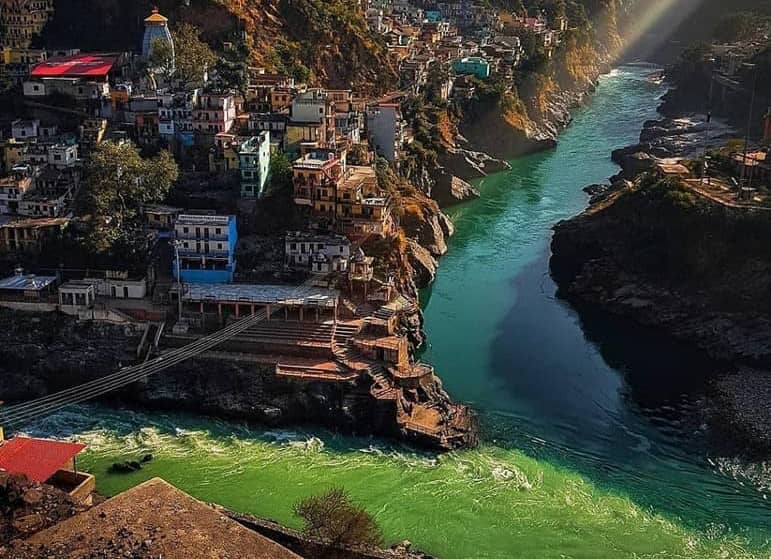
3. Travel Tips
- Acclimatization: Since Badrinath is at a high altitude (around 3,300 meters), take a day or two to acclimatize in towns like Joshimath.
- Weather: The weather can be quite cold, even in summer, so pack warm clothing.
- Permits: No special permits are required for Indian citizens. However, international travelers might need to register before the journey.
- Safety: The terrain is mountainous, so be cautious during the monsoon season as landslides can occur.
4. Accommodation
Badrinath has a variety of accommodation options, including guesthouses, ashrams, and hotels. Many pilgrims also prefer staying at Joshimath, which offers a range of lodging facilities and is just 45 km away from Badrinath.
5. Local Transport
- Once in Badrinath, the temple is a short walk from most accommodations. For those who may have difficulty walking, pony rides and palanquins (palpalis) are available.
6. Nearby Attractions
- Mana Village: The last village on the India-Tibet border, around 4 km from Badrinath.
- Vasudhara Falls: A beautiful waterfall, about 6 km from Mana Village.
- Tapt Kund: A natural hot spring near the temple, considered sacred and known for its healing properties.
- Charanpaduka: A rock with what is believed to be Lord Vishnu’s footprints, 3 km from Badrinath.
Suggested Itinerary
- Day 1: Reach Rishikesh or Haridwar.
- Day 2: Travel to Joshimath.
- Day 3: Travel from Joshimath to Badrinath, visit the temple, and explore nearby sights.
- Day 4: Return to Joshimath or continue exploring.
Visiting Badrinath Temple is a spiritually enriching experience, complemented by the majestic beauty of the Himalayas.
Where has to Stay in Badrinath Temple?
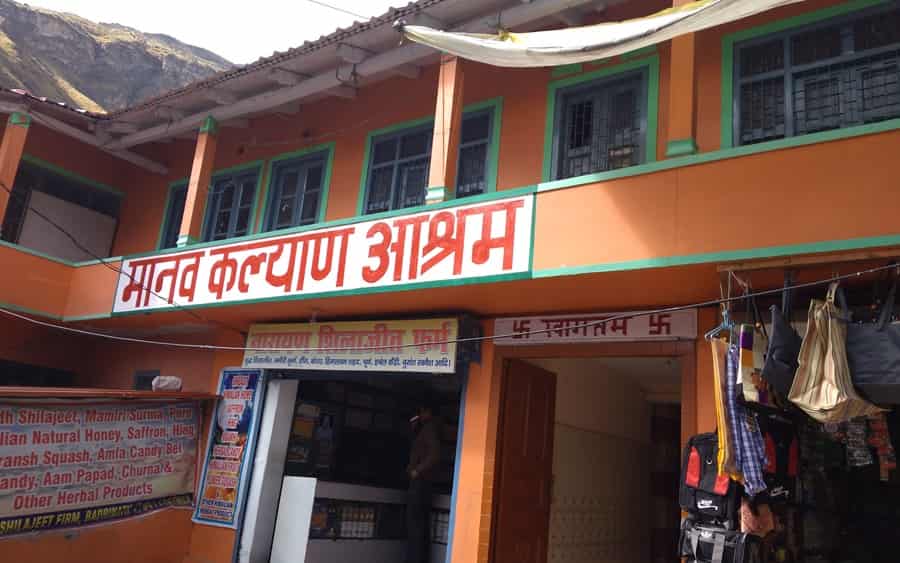
When visiting Badrinath Temple, there are various accommodation options available to suit different preferences and budgets. Here are some key places where you can stay:
1. Hotels
- GMVN Tourist Rest Houses: Operated by the Uttarakhand government, these are budget-friendly, clean, and well-maintained rest houses located near the temple.
- Sarovar Portico Badrinath: A popular mid-range hotel offering comfortable rooms with modern amenities. It’s close to the temple and offers good views of the surrounding mountains.
- Hotel Narayan Palace: Another well-rated hotel near the temple with decent rooms, good food, and essential facilities for a comfortable stay.
- Hotel Snow Crest: This is a higher-end option with clean rooms and additional services like a restaurant and 24-hour room service.
2. Ashrams and Dharamshalas
For budget-conscious pilgrims, ashrams and dharamshalas provide simple, clean lodging with basic amenities, often at low or no cost. These include:
- Shri Badrinath Kedarnath Samiti Dharamshala: Offers basic accommodation and is close to the temple.
- Brahma Kapal Ashram: A simple place to stay with basic facilities, ideal for pilgrims looking for affordable lodging.
- Shankaracharya Math: An important spiritual center offering lodging facilities for devotees.
3. Guest Houses
- Several private guest houses are available, offering budget stays. These are generally close to the temple and offer basic services like hot water, clean rooms, and food facilities. Options include:
- Jagirdar Guest House
- Charan Paduka Guest House
4. Nearby Towns
- If Badrinath is fully booked or you prefer to stay at a lower altitude, Joshimath, about 45 km away, has a wide range of accommodations. Many pilgrims choose to stay here and make a day trip to Badrinath.
Travel Tips:
- Advance Booking: Especially during peak seasons (May-June, and September-October), it is advisable to book your stay in advance.
- Weather Preparedness: Badrinath can be quite cold, so ensure your accommodation has heating or that you carry adequate warm clothing.
Most of these accommodations offer stunning views of the Himalayas, making your spiritual journey even more enriching.
What Prashad distribute to bhakt ?
At Badrinath Temple, the prasadam (holy offering) distributed to devotees is considered highly sacred. Some of the main types of prasadam include:
1. Tulsi Leaves
- Tulsi (Holy Basil) is believed to be dear to Lord Vishnu, and devotees receive tulsi leaves as part of the prasadam. These leaves are often placed on the main deity of Lord Badrinath during rituals and then given to pilgrims.
2. Dry Fruits and Nuts
- Dry fruits such as almonds, raisins, and cashews are commonly distributed as prasadam. These items are easy to carry and are considered nutritious offerings.
3. Panchamrit
- Panchamrit is a sacred mixture made from five ingredients: milk, yogurt, ghee (clarified butter), honey, and sugar. It is offered to Lord Vishnu and then distributed to devotees in small quantities.
4. Kesar or Saffron
- Saffron (Kesar) is another important item used in the temple rituals and is sometimes distributed as part of the prasadam, especially on auspicious occasions.
5. Badri Kedar Sweets
- Special sweets made from local ingredients such as Badri Kedar, a variety of rice unique to the region, are sometimes distributed. The temple kitchen may also distribute simple sweets like laddoo or peda.
6. Rice or Khichdi
- During certain rituals, rice or khichdi (a mixture of rice and lentils), offered as bhog (food offering) to Lord Vishnu, is distributed among the devotees as prasadam.
The prasadam, being blessed by the deity, is cherished by pilgrims and is often taken back home to share with family members, symbolizing divine blessings.
In Badrinath temple nearby famous places where has to be visit
Badrinath is surrounded by several spiritually significant and scenic places that are worth visiting. Here are some of the most famous sites near Badrinath Temple:
1. Mana Village

- Distance: 4 km from Badrinath
- Significance: This is the last village on the Indian border with Tibet and holds great mythological importance. It is believed to be the village where the Pandavas stopped during their journey to heaven in the Mahabharata.
- Key Attractions:
- Vyas Gufa: The cave where sage Vyasa is believed to have composed the Mahabharata.
- Ganesh Gufa: Where Lord Ganesha is said to have written the Mahabharata as Vyasa narrated it.
- Bhim Pul: A natural rock bridge said to have been placed by Bhima (one of the Pandavas) across the Saraswati River.
2. Vasudhara Falls
- Distance: 6 km trek from Mana Village
- Significance: A stunning waterfall that drops from a height of 400 feet. It is believed that the water of the falls does not touch those who are impure in heart.
- Hiking Tip: The trek offers beautiful views and requires moderate effort, but it is a rewarding experience for nature lovers and pilgrims.
3. Tapt Kund
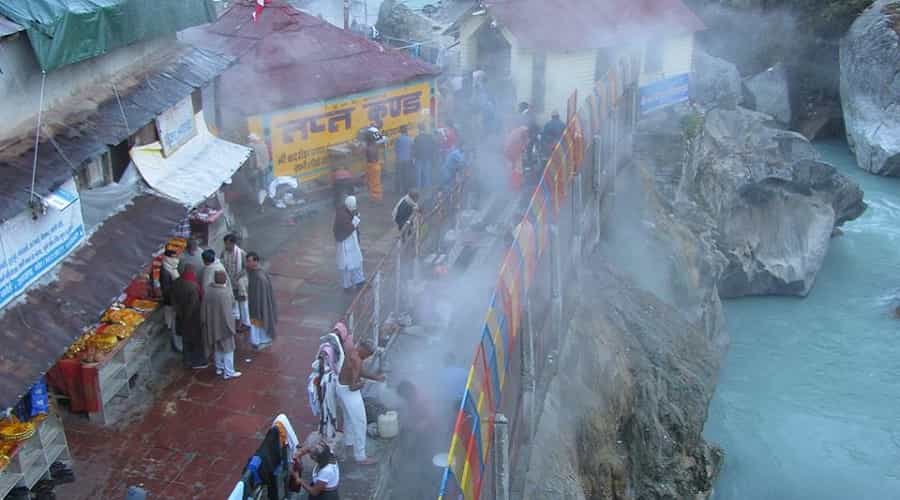
- Distance: Right next to the Badrinath Temple
- Significance: A natural hot spring where pilgrims take a holy dip before visiting the temple. It is believed to have healing properties and is considered sacred.
4. Charanpaduka
- Distance: 3 km trek from Badrinath
- Significance: A rock that bears what are believed to be the footprints of Lord Vishnu. The trek to Charanpaduka is short but steep, and it offers breathtaking views of the surrounding mountains.
5. Narad Kund

- Distance: Near Badrinath Temple
- Significance: A sacred pool where the idol of Lord Vishnu is believed to have been found. It is located near Tapt Kund and is a site of great reverence for devotees.
6. Brahma Kapal
- Distance: 0.5 km from Badrinath Temple
- Significance: A sacred ghat along the Alaknanda River where devotees perform rituals for the deceased, including the Shraddha ceremony to honor their ancestors.
7. Neelkanth Peak
- Distance: Visible from Badrinath
- Significance: Often referred to as the “Queen of Garhwal,” this snow-covered peak (6,597 meters) forms a stunning backdrop to Badrinath Temple. It is named after Lord Shiva and is particularly beautiful at sunrise when it glows golden in the sunlight.
8. Pandukeshwar
- Distance: 23 km from Badrinath
- Significance: This ancient town is believed to have been established by King Pandu, the father of the Pandavas. It is a significant site for religious rituals and houses temples dedicated to Lord Vasudeva and Lord Yoga Badri.
9. Satopanth Lake
- Distance: 25 km trek from Badrinath
- Significance: This high-altitude glacial lake is considered sacred and is associated with the Hindu trinity of Brahma, Vishnu, and Shiva. The trek is challenging but rewarding for adventurers and nature enthusiasts.
These places add depth to the spiritual experience of visiting Badrinath and showcase the natural beauty of the Himalayas. If you have time during your pilgrimage, exploring these nearby sites will enhance your journey.
What miracle hide about badrinath temple ?
Badrinath Temple is not only revered for its religious significance but is also associated with various miracles and legends that continue to intrigue devotees. Some of the most famous miracles and mystical stories surrounding the temple include:

1. The Eternal Fire of Akhand Jyoti
- Inside the Badrinath Temple, there is an Akhand Jyoti, or eternal flame, that has been burning for centuries without being extinguished. It is believed that the flame symbolizes divine presence and is lit using only ghee (clarified butter). According to legend, the fire represents the eternal light of knowledge and devotion.
2. Self-Manifested Idol of Lord Badrinarayan
- The main deity in the temple, the black stone idol of Lord Vishnu (Badrinarayan), is believed to be self-manifested or Swayambhu, meaning it appeared by itself from the earth. The idol was supposedly found in the Narad Kund, a hot water spring near the temple, and is made of saligram stone, which is considered extremely sacred in Hinduism.
3. Hot Springs in Freezing Temperatures
- The Tapt Kund, a natural hot water spring near the temple, remains at a comfortably warm temperature even in the freezing cold of the Himalayas. It is believed to have healing properties, and pilgrims take a dip in the spring before entering the temple. The unexplained warmth of the spring, despite the icy environment, is considered a miraculous phenomenon.
4. The Disappearance of the Badri Tree
- The temple is named after the Badri (jujube) tree, under which Lord Vishnu is said to have meditated. It is believed that in ancient times, the area surrounding the temple was covered with Badri trees, but over time, the tree mysteriously disappeared. Some legends say that Goddess Lakshmi took the form of a Badri tree to shelter Lord Vishnu during his meditation.
5. Nara-Narayana Mountains Protecting the Temple
- The Badrinath Temple is located between two mountain ranges, Nara and Narayana, named after the twin sages who are considered incarnations of Lord Vishnu. It is believed that these mountains act as divine protectors, shielding the temple from natural disasters like avalanches and earthquakes. Devotees attribute the temple’s survival in harsh conditions to this miraculous protection.
6. The Appearance of the Char Dham Yatra
- According to legend, it was Adi Shankaracharya who re-established the temple in the 8th century and revived the Char Dham Yatra. However, it is said that Lord Vishnu himself once appeared in a dream to Adi Shankaracharya, instructing him to unearth the idol from the Narad Kund and establish the shrine. This divine intervention is considered one of the miracles behind the existence of the temple.
7. Spiritual Peace and Healing
- Many devotees and spiritual seekers claim that visiting the temple brings about profound peace, healing, and an unexplainable sense of connection with the divine. The miraculous power of the temple is believed to not only heal the body but also cleanse the soul, according to the faith of many visitors.
These legends and miracles add to the mystical aura of Badrinath Temple, making it a place of deep reverence and spiritual significance.
Arti timing of Badrinath temple
The aarti timings at Badrinath Temple vary slightly depending on the season. For the current schedule during the active pilgrimage months:
- Morning Aarti (Shubh Aarti): Typically starts around 4:30 AM to 5:00 AM, just before sunrise.
- Evening Aarti (Sandhya Aarti): Generally takes place around 6:30 PM to 7:00 PM, close to sunset.
Read Also : Famous Temple-Dhari Devi Temple





